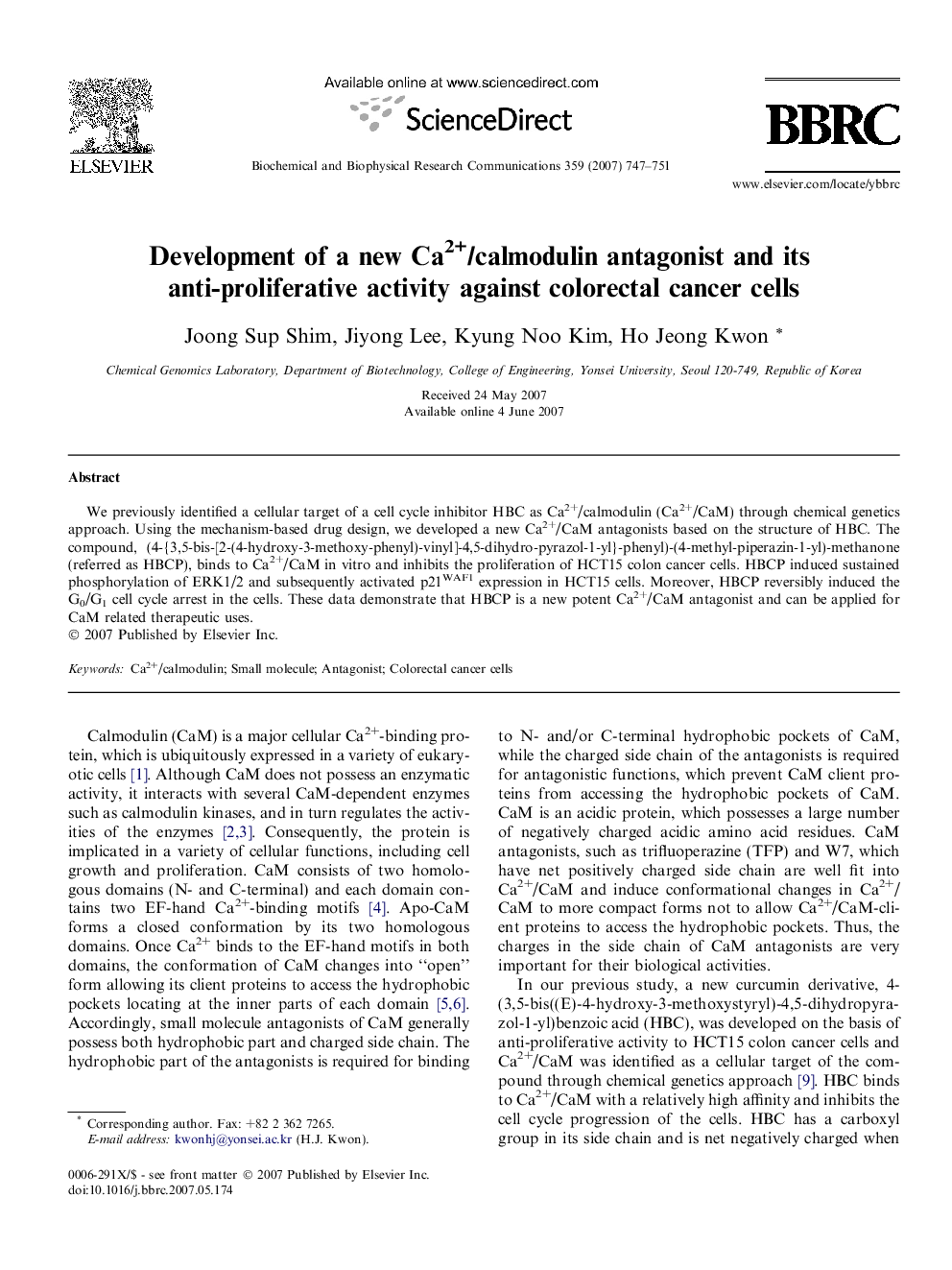| Article ID | Journal | Published Year | Pages | File Type |
|---|---|---|---|---|
| 10767300 | Biochemical and Biophysical Research Communications | 2007 | 5 Pages |
Abstract
We previously identified a cellular target of a cell cycle inhibitor HBC as Ca2+/calmodulin (Ca2+/CaM) through chemical genetics approach. Using the mechanism-based drug design, we developed a new Ca2+/CaM antagonists based on the structure of HBC. The compound, (4-{3,5-bis-[2-(4-hydroxy-3-methoxy-phenyl)-vinyl]-4,5-dihydro-pyrazol-1-yl}-phenyl)-(4-methyl-piperazin-1-yl)-methanone (referred as HBCP), binds to Ca2+/CaM in vitro and inhibits the proliferation of HCT15 colon cancer cells. HBCP induced sustained phosphorylation of ERK1/2 and subsequently activated p21WAF1 expression in HCT15 cells. Moreover, HBCP reversibly induced the G0/G1 cell cycle arrest in the cells. These data demonstrate that HBCP is a new potent Ca2+/CaM antagonist and can be applied for CaM related therapeutic uses.
Related Topics
Life Sciences
Biochemistry, Genetics and Molecular Biology
Biochemistry
Authors
Joong Sup Shim, Jiyong Lee, Kyung Noo Kim, Ho Jeong Kwon,
